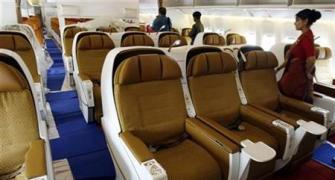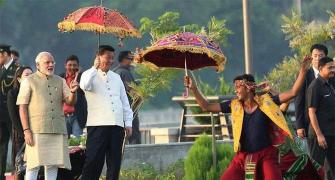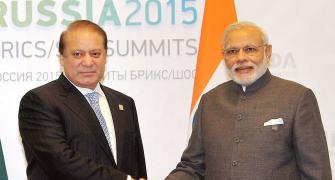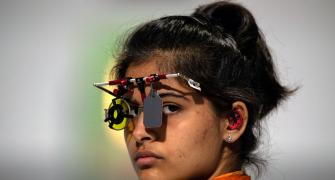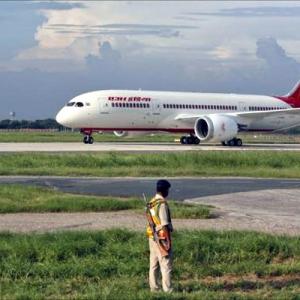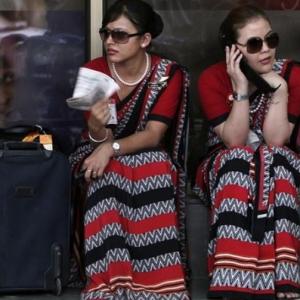A mutually beneficial relationship between the airline and the govt is the reason for its continued funding, notes A K Bhattacharya.

Two entries pertaining to the civil aviation sector in the first batch of supplementary demand for grants presented to Parliament on July 31 deserve closer scrutiny by those desirous of understanding how the Narendra Modi government treats its public sector undertakings or PSUs.
The first entry envisages provision of additional funds of Rs 800 crore (Rs 8 billion) to Air India as equity infusion and the second entry is for an amount of Rs 100 crore (Rs 1 billion) allocated to clear pending claims of Air India towards maintenance of the prime minister's aircraft.
Both the demands will be met through additional expenditure, and not by any savings. The significance of the two entries lies not in the amount of money, but in the political context and the economic policy implications of the manner in which the taxpayer's money is being spent.
 Why Air India, a PSU airline, should need equity infusion this year may well defy ordinary business logic at a time when falling crude oil prices are making airline operations profitable globally and the airline itself is not on any significant capacity expansion spree requiring extra funds of this nature.
Why Air India, a PSU airline, should need equity infusion this year may well defy ordinary business logic at a time when falling crude oil prices are making airline operations profitable globally and the airline itself is not on any significant capacity expansion spree requiring extra funds of this nature.
The logic becomes even more questionable when one realises that the Budget for 2015-16 had already provided Rs 2,500 crore (Rs 25 billion) for equity infusion into the loss-making Air India. It would appear, therefore, that so weak is Air India's financial situation that this amount is considered inadequate, prompting the government to raise capital infusion by Rs 800 crore.
But if you look back, the government's approach to an ailing PSU looks even more problematic.

For the last several years, the government has been infusing additional capital into Air India - Rs 5,780 crore (Rs 57.80 billion) in 2014-15, Rs 6,000 crore (Rs 60 billion) each in 2012-13 and 2013-14, Rs 1,200 crore (Rs 12 billion) each in 2010-11 and 2011-12 and Rs 800 crore in 2009-10.
It would thus appear that both the United Progressive Alliance (UPA) and its successor government, led by the National Democratic Alliance (NDA), have continued to fund Air India, even as they have consistently failed to ensure that the airline becomes financially sustainable.
Consider the numbers. The UPA government in its second five-year tenure from 2009 to 2014 pumped Rs 15,200 crore (Rs 152 billion) into Air India by way of equity.
Not to be outdone, the NDA government, which came to power in May 2014, has already excelled its predecessor and provided Rs 9,080 crore (Rs 90.80 billion) of equity for Air India.

It would be argued that the NDA is only paying for the past sins of negligence of the UPA government, but the fact is neither of the two governments has shown any credible action plan to turn the airline around or hand over its management to a group which can make a difference or if nothing works, simply wind it up.
The owner of any company that has to infuse fresh equity of over Rs 24,000 crore (Rs 240 billion) in six years would have begun considering the hard option of either selling it or winding it up.
But the Indian government, it is clear, wants to keep Air India going, perhaps for different reasons.
It needs what it might call a national airline to keep ferrying political leaders in power and even government officials across the country or even abroad on terms that are easy for them, but expensive for the nation.
It is in this context that the proposed allocation of Rs 100 crore (Rs 1 billion) for Air India to settle its pending bills for maintaining the prime minister's aircraft becomes significant.
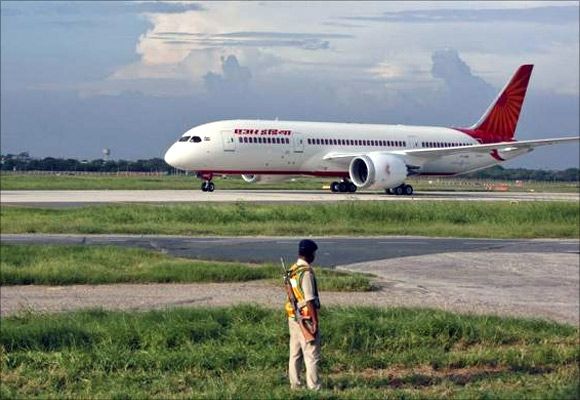
This also gives an indication of what the nature of the mutually beneficial relationship between Air India and the Indian government is and hints at the likely reason for the government to perpetuate the current system of funding the airline without really taking the hard measures to make it financially independent.
Take a look at the costs the government has incurred on chartering Air India flights for ferrying the prime minister.
Former Prime Minister Manmohan Singh undertook 73 foreign visits between 2004 and 2014, entailing a travel time of 246 days. But the problem is that for as many as five of his last visits (17 days), the bills for chartering the Air India aircraft are still under process and the chartering costs for the remaining 68 foreign visits came to around Rs 700 crore (Rs 7 billion).
For Prime Minister Narendra Modi, who has so far used the Air India chartered flights for 55 days during his 13 foreign visits, no bills for as many as eight visits have been received by the government, bills for four visits are under process and the bill for only one visit has been computed.
Which other airline will agree to offer such easy terms for settling bills for chartering its aircraft?


